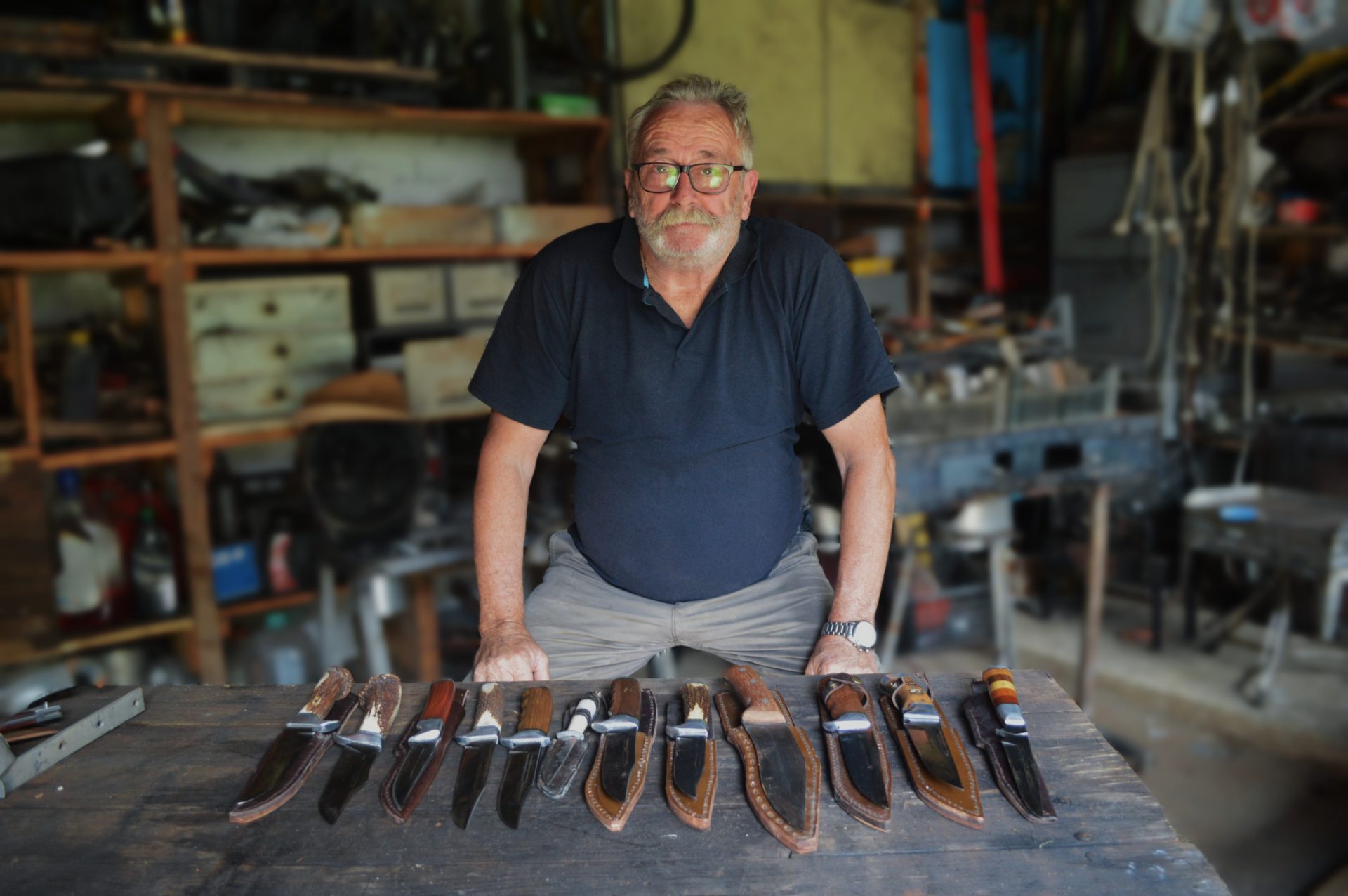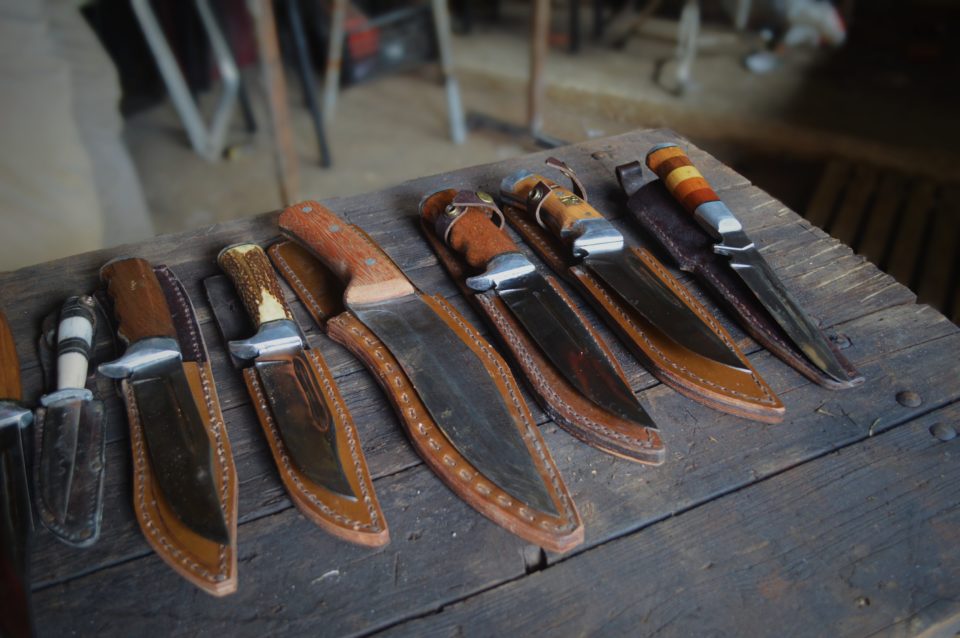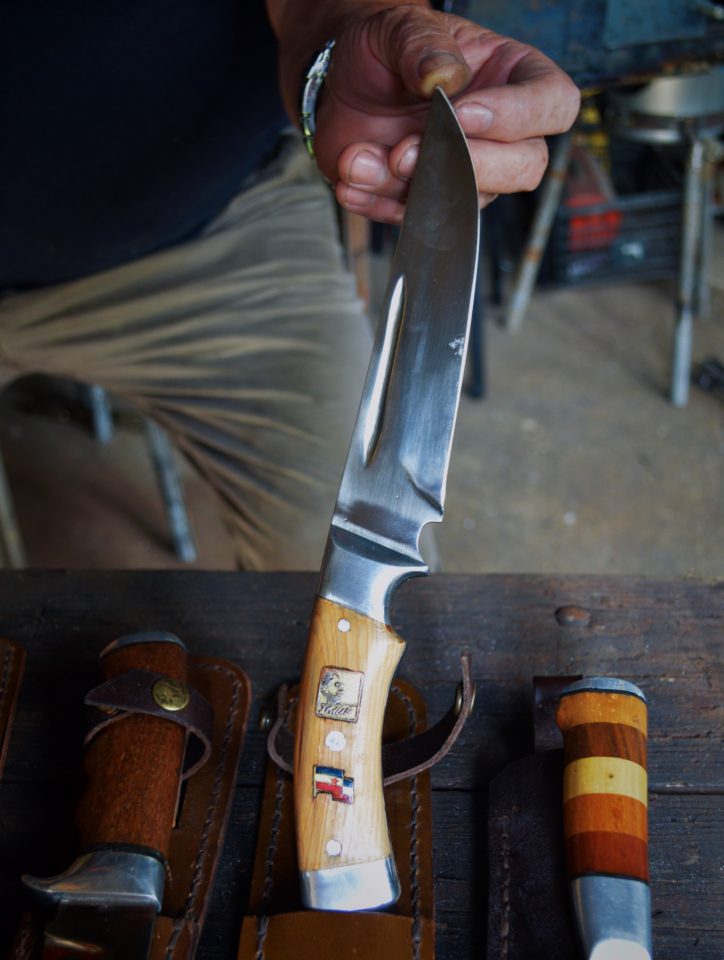
Retired life doesn’t have to be dull and unproductive, and Zaim Isić, a former teacher, is living proof. In retirement, he has channeled his love for the outdoors into crafting useful tools, including wooden knives with durable aluminum blades, sheaths, and grinders for things like apples and corn, and more. Visitors often describe his handmade products as works of art.
He says that crafting a knife is not an easy task, and he dedicates his maximum attention to each one, ensuring that every knife is unique, as are the covers he makes for them. It takes him anywhere from 25 to 30 hours to create a single knife and sheath set.

“Every profession has is a process to follow, and knife-making is no exception. The process involves finding materials, sketching, cutting, forging, filing, and tempering, among other things,” explains Isić.
He has set up a workshop next to his house where he makes knives with unique handles and sews covers for them, ensuring sharpness while minimizing the possibility of causing harm. In his work, he utilizes a drill, drilling disc, cutting tools, anvil, emery disc, polishing disc, polishing paste, ruler, forge fire, and various types of files.
When it comes to obtaining the materials to make knives and sheaths, he says that he purchases some and finds others in nature. His knife handles are made from various types of wood, such as walnut, mulberry, plum, yew, Brazilian walnut, ash, and beech, while the blades are foraged from durable aluminum.
“People are very interested, especially hunters, hikers, and outdoorsmen, but there are many others who enjoy using them around the house. I’ve sold a great many knives as well as given many as gifts,” said Isić.
Asked if he has a favorite knife out of all those he has crafted, Isić responds that while all of them are special and unique, there is one of which he is particularly fond because he made it using a combination of five types of wood. When visitors come to his workshop, he says they notice this knife right away, adding, “That knife attracts a lot of attention.”.

In addition to crafting knives, Isić fills his retirement days by making meat spits, grills, apple and corn grinders, and other items.
“Everything can be made with the right attitude. If a person wants to work, they’ll find a way,” Isić asserts.
He believes that a person has to love what they do in order to accomplish great things. Given that skilled craftspeople are becoming increasingly scarce, he says he would like to see more interest in his craft among young people. “We from the older generations will do this as long as we can, but when we’re gone, it will be difficult to find craftsmen,” notes Isić.
He gives away some of the handmade products as gifts and sells others. The interest of his visitors inspires him to create more and more interesting designs, which they refer to as the art of Master Isić.






